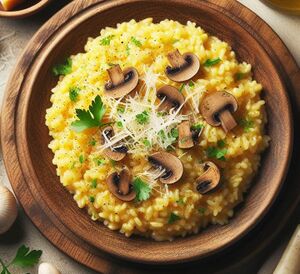Villamagna
| Nation: | |
| Population: | 470,880 |
| Predominant language: | Vegnian, Common Tongue |
|
| |
| Main roads: | Via Cossa, Via Pianeggiante, Via della Repubblica, Via G.A. Franchini |
| Major districts: | Historic Centre, Commercial Area, Residential District, Industrial Zone, Agricultural Periphery |
|
| |
| Current mayor: | Giovanni Marcone (PNV) |
| File:Villamagna.jpg | |
| Map versions: | |
Villamagna (villamˈaɲɲa) is a municipality of 284,652 inhabitants and the capital of the Ponente region. It is known for its towers, its long porticoes and a well-preserved historic centre, among the largest in Vegno.
Physical geography
Villamagna is located in the western reaches of the Vegnese plain, close to the first hills of Apollonia. The altitude of the municipal area ranges from 29 m in the Corticella district to 54 m in the centre.
Climate
Villamagna has a humid climate, with mild and humid summers and rather cold and harsh winters.
The absolute minimum temperature recorded is −28.8 °C, while the absolute maximum is +30.1 °C during summer. The average rainfall in the city varies, depending on the year, from 600 to 900 mm and is usually concentrated in spring and autumn.
In winter there can be snowfalls, sometimes very heavy, and frequent night frosts: like that of 1722 (when 119 cm of fresh snow fell in the city).
The modest windiness contributes to the formation of fogs and mists and the persistence of high air pollution resulting from both local and transit traffic. Occasionally, however, there were days with gusts of up to 120 km/h; during the summer, strong gusts can be recorded, even exceeding 100 km/h during storms and other local storm events.
Administrative Divisions
Villamagna is divided into different neighborhoods, each with its own identity and function:
- Historic Centre: The beating heart of the city, with ancient buildings and paved streets.
- Commercial Area: The district dedicated to shopping and business.
- Residential District: Where the homes and city parks are located.
- Industrial Zone: The economic engine of the city, with factories and production plants.
- Agricultural Periphery: The rural areas surrounding the city, dedicated to agriculture.
Economy
Villamagna's economy is an emblematic example of how a city can prosper through a balance between modernity and tradition. The tertiary sector, in particular, represents the backbone of the city's economy, with an emphasis on financial services, education, healthcare and tourism. These services not only provide employment to a large part of the active population, but also contribute to defining the cultural and social identity of Villamagna.
Financial and Commercial Services
The financial district of Villamagna, known as the "Cuore D'Oro" (Heart of Gold), is the hub of banking and financial activities. With the presence of numerous national and international banks, investment funds and insurance companies, the district attracts professionals from all over the world. This has led to a significant increase in the real estate sector, with the construction of modern skyscrapers housing offices and luxury apartments.
Education and Research
Villamagna is also a center of excellence for education and research. The University of Villamagna is renowned for its programs in economics, engineering and social sciences, as well as one of the oldest in Vegno, attracting students and researchers from different parts of the nation over the years. Furthermore, the connections between the university and local industries have encouraged innovation and the development of technological and biotechnology start-ups.
Tourism
Tourism plays a crucial role in Villamagna's economy. The city, with its well-preserved historic centre, museums, theaters and art galleries, is a popular destination for visitors interested in culture and history. Furthermore, annual events such as the "Festival di Ponente" and the "Mercato di Villamagna" attract thousands of tourists, stimulating the hotel and restaurant industry.
Agriculture
Despite the emphasis on the tertiary sector, agriculture remains a vital sector for Villamagna's economy. The fertile lands around the city are used to grow a variety of products, including cereals, vegetables and fruits. Organic farming and sustainable practices are strongly encouraged, and local produce is in high demand at city markets and restaurants, which often boast menus based on locally sourced ingredients.
Culture
Traditions and Holidays
The traditions of Villamagna are rooted in the history of the city and are celebrated with great fervor throughout the year. The "Festival di Ponente", held every summer, is a lively expression of Villamagna's cultural heritage, with music, folk dances and theatrical performances enlivening the streets of the historic centre. Another significant event is the "San Giacinto Fair", a patronal festival which sees the participation of local artisans and street artists, and culminates with an impressive religious procession.

Cuisine
Villamagna cuisine is famous for its simplicity and authentic flavours. Dishes such as the "Risotto alla Villamagnese", prepared with rice grown in the fertile peripheral lands, and the "Silver Fish", a local river fish cooked on the grill, are considered true gastronomic symbols. Traditional desserts, such as the "Biscotti di Ponente" and the "Torta Giacinto", take their name from the legends and historical places of the city and are particularly sought after during the holidays.
Sport
Football occupies an important place in Villamagna sport. The "Giacinto Pesce" stadium, with a capacity of 30,000 seats, is the beating heart of city football and the home of the local team, Villanova Calcio, which plays in Lega B Vegnese for the 2023-24 season. Football matches at the "Giacinto Pesce" are social events of great importance, which unite fans of all ages. The team is a point of pride for the city and represents the ambition and fighting spirit of Villamagna.
Transport
Villamagna boasts a cutting-edge public transport system, with a network of buses, trams and a metro line that connects the various neighborhoods. The central station of Villamagna offers direct railway lines to numerous national destinations, in particular with the capital Cossa, connected via the white line, and the cities of Mhazar, Taurasi and Murgione, connected via the orange line.